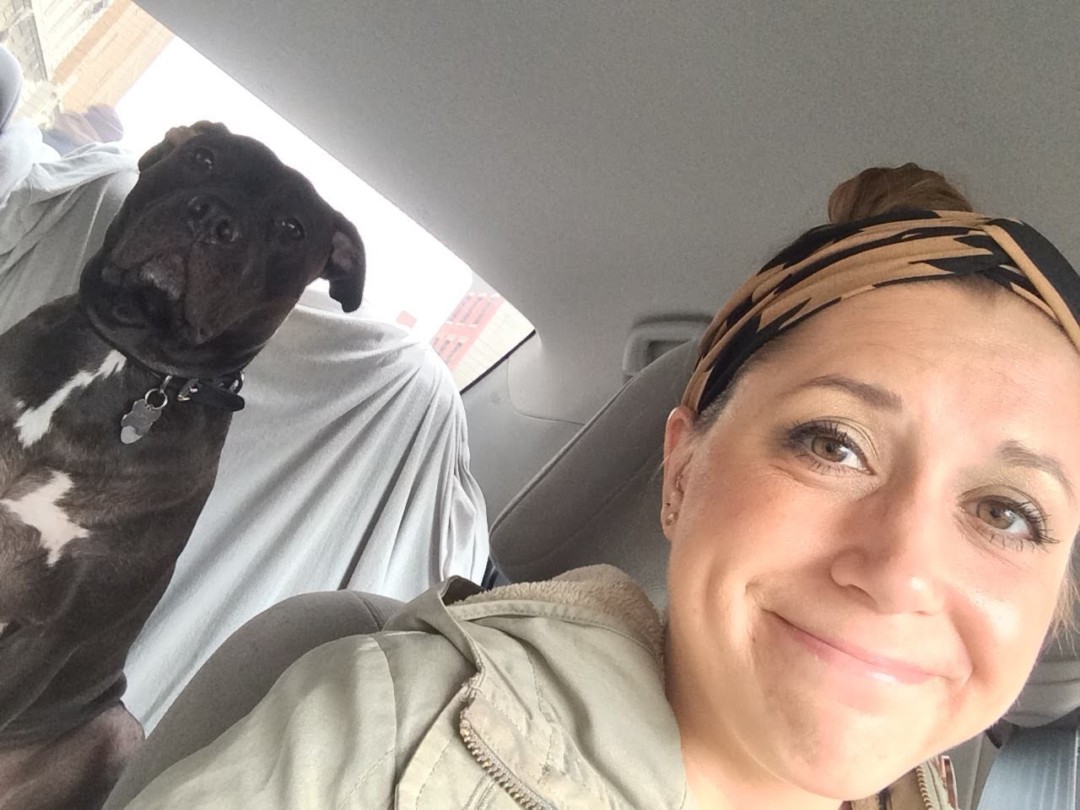“Begin at the beginning,” the King said gravely to the white rabbit, “and go on till you come to the end: then stop.”
Alice in Wonderland
Fat chance, King, I keep mumbling to myself as I write and rewrite this post, trying desperately to decide where the beginning of this story is. I’ve always loved this quote, as it helps me narrow down my plethora of converging thoughts while writing. But, in this case, it feels more like the King is taunting me.
I usually tell people my health issues started when I was diagnosed with Type 1 (autoimmune) diabetes in 2016. But, for reasons I just mentioned, this isn’t entirely accurate. So, let me begin this story by explaining why I’m writing it at all.
At 32 years old, my life of spontaneous road trips and flights to anywhere quickly became rigid schedules, extensive medical research, and strict treatment regimens to manage what became a cascade of debilitating symptoms. At several points over the next three years, I’d lie in bed for weeks at a time, unable to move, focus or function. My body would slowly shut down and, for a while, no one had answers as to why, or guidance on how to stop it.
I have what’s defined as a “slow-progressing form” of autoimmune disease. The symptoms usually slither in slowly and sneakily, making it hard to identify the cause. My story is unfortunately not unique. I’m one of millions of people living with one of roughly 100 types of autoimmune disease. Some of the conditions have treatments like insulin, steroids, and antibiotics. But, even with these medications – most which have side effects – many of us receive messaging that there’s little we can do to treat our lingering symptoms.
I’ve always found this messaging to be unacceptable. If my life was to become a brain and body that suddenly crumbled at age 32, I was hellbent to determine why. I quickly learned that if I wanted answers, I’d have to be my own health advocate and my own healer.
I have several beginnings on my journey. These beginnings eventually strung together to create this story of the most challenging, limiting and freeing time of my life. This post marks the beginning of a greater series of posts, all which I’m writing with you, my readers, in mind. I’m thinking of me too, and how much I’ve missed this public writing platform. As I’ve worked my way back to me these past few years, I’ve realized the important role creative outlets play in my health and wellness. I will share with you what I’ve learned and what I now know from my experiences. I hope you gain something for yourself along the way.
My physical symptoms began sometime in 2015, though I didn’t recognize them as “symptoms” at the time. They presented so slowly that I easily rationalized them as normal responses to working two emotionally intense jobs in two different New York City boroughs. Over time, my energy decreased and I became less interested in socializing – something my social self usually lives for. I struggled to remember little things, like how a new pair of jeans ended up in my closet despite personally purchasing them a few months prior. “Wow, I’m losing my mind,” I’d say, then laugh it off and press on.
One Saturday during the summer of 2015, I began sweating, shaking and feeling dizzy while stalled underground and sardined in a packed Brooklyn-bound 4/5 train. It was mid-afternoon and I had stayed at work in the Bronx longer than expected, so hadn’t eaten lunch. I know that feeling well now. It was hypoglycemia of the worst kind, only I had no diagnosis, sugar or exit plan – the type of emergency so severe for diabetics that the race for time becomes a race for life.
When the train doors finally opened, I gasped my way onto the platform and embraced one of the dirty tile columns that I wouldn’t dare touch in a coherent state. Without the support of being lodged among strangers, I had little strength to stand upright. I (kind of) got my bearings and stumbled my way toward the stairs, arms out for balance as hurried passengers rushed past me, but also wobbled along with me through my tunnel vision. Movie scenes of drugged characters trying to find their way our of crowded night clubs flickered in my mind, imagining it must be what I looked in that moment.
I found the stair railing and grabbed it with both hands, hoisting my heavy, shaking legs up one step and then another. I channeled all the energy I could muster into this task that I had performed with ease only hours prior. Step….good…now, the other foot…good…take your time…I thought in this moment of parents who teach their kids how to climb subway stairs during rush hour while hundreds of discontented, late New Yorkers persisted closely behind.
I only vaguely remember emerging to the bright, bustling scene of ground level. Next thing I knew, I was standing at a bodega food counter staring longingly at a large cup of freshly squeezed orange juice behind the glass case. I didn’t understand why, but I needed it. The man working the counter must have recognized that I needed it too. He stared back at my hazy, glassy eyes, his eyes then following my slow, but determined point toward the orange juice. If I actually spoke, it was incoherent. I also don’t know if he charged me. But, I slumped into an empty table and guzzled that juice as if my life depended on it. And, as it turned out later, it did.
I had a few episodes like this that year. Another time, I attempted to drive south to Rochester from our family cottage and ended up at the Canadian border. These episodes were infrequent enough for me to rationalize them inward, blaming them on being hungry or tired. In hindsight, it felt like someone had been slowly attaching weighted chains to different parts of my body. Little by little, the simplest of tasks began to feel heavier and harder to accomplish. Yet, nothing appeared out of sorts because it happened too slowly to notice. So, pressed on, holding myself to the same impossible standards I’d always held myself to.
Of course, I needed to work harder while wearing my invisible weighted chains. Get it together, I’d scold myself on days when my body couldn’t keep up with my expectations of it. Self criticism is often the unhealthy cousin to high standards.
I finally saw a doctor in May of 2016 after nearly passing out in the Brooklyn IKEA. It took this happening in front of my mom, sister and now brother-in-law (a former military medic) for me to recognize something was really wrong. “You need to see a doctor, Cougar,” my brother-in-law said to me. I adopted the nickname “Cougar” in New Orleans after being one of the oldest students in my grad school class at 27.
I didn’t know it then, but the directness of his statement was all I needed to hear. It felt like relief actually – as if I needed permission to stop pushing my body past its limits and to stop doing it all alone. This sounds like a ridiculous concept when I step back from it, but it’s a trap that many of us over-achieving, self-sacrificing types can fall into easily.
With this permission, I suddenly started to recognize my symptoms as symptoms. By this point, I had become so grossly fatigued that walking up stairs only happened through heavy breaths and the support of death-gripping the railing. I would make full-course breakfasts for myself each morning, leave the house for work an hour later, and feel so hungry by the time I passed the corner Starbucks that I’d stop and buy a second breakfast. I couldn’t seem to eat enough food. Yet, I had lost about 25 pounds in a matter of months. I would wake myself out of sleep to pee five to six times each night. I couldn’t see straight after eating.
On my first trip to the doctor on May 18, 2016, my primary care physician – we’ll call her Dr. S – attributed my symptoms to “getting older,” my vegetarian diet, and “being in your thirties now.” She ran some precautionary lab work, gave me a shot of B12 for energy and sent me on my way. It became one more reason to justify minimizing my symptoms. I didn’t notice, my friends didn’t notice, the doctor didn’t notice. Feel helpless? Nah, I’ll choose pushing instead.
Two days later, on May 20, I received a call from Dr. S informing me that my fasting blood sugar levels were 312. The normal range is 70-100. Now knowing how carbs impact my blood sugar levels, I was surely spiking into the 700-1000s post-meals. I received this call on a Friday and Dr. S advised me to come back on Monday to rerun the test.
“I think you might have diabetes,” she said. Also, “It may be a fluke.” She recommended going to the hospital if I didn’t feel well that weekend, which may have been one of the most unhelpful pieces of well-intentioned advice I’d ever received. I had no idea what normal felt like anymore. And, from what I know about diabetes now, I needed to be in the hospital…like, yesterday.
I barely left the couch all weekend. The next morning, I took a lovely walk with my dog, made blueberry pancakes, then immediately fell back to sleep. It makes perfect sense now. My blood sugar would have been at it’s lowest point (still three times too high in the 300s) that morning. This made the walk tolerable. Then, I ate carbs for breakfast. Then, I spent the day eating more carbs and slipping in and out of consciousness. I had zero understanding of diabetes at this point, or even that carbs were the same thing as sugar.
Three long days later, I returned to the doctor for follow-up testing. Results confirmed Type 1, an autoimmune form of diabetes. I later discovered my diagnosis is more accurately Latent Autoimmune Diabetes in Adults (LADA), a slow-progressing form of autoimmune diabetes. LADA occurs when the pancreas stops producing adequate insulin, most likely from an “insult” that slowly damages our insulin-producing cells. It almost always occurs in people over age 30.
But, we didn’t have time to get into all that during this May 2016 appointment. In fact, I wouldn’t come to that understanding for years, as most doctors don’t know what LADA is. This visit included 15 minutes of diabetes education and eleven new prescriptions, including syringes and two types of insulin. I taught myself how to inject via a pharmacy instruction manual in my Harlem apartment that night. I spent a week dosing incorrectly, which could have hospitalized me or worse had my blood sugar been more stable.
My health struggles would eventually become so much more than diabetes. In the end, diabetes is only one beginning of many. It would also become a part of me I’m grateful to. Without it, I’m not sure what would have stopped me from myself. More on all this in the rest of my series. Thank you for being here with me. I’m grateful to each of you who who up to my creative platform and have continued to join me on this unpredictable journey of life.
This post is Part 1 of the series, My Autoimmune Journey. Check out Part 2 here.
Photo of my beloved pit bull, Marconi, and me driving around Brooklyn. A characteristic scene in 2015.





7 Comments
This is a great Part 1 post — can’t wait for the other parts! Sharing parts of this journey with you, I have of course learned a lot about autoimmune disease. But one thing I still can’t get over is your episode while riding the subway. I’ve experienced terrible migraines on the subway, and that alone way awful to navigate. I can’t imagine what it was like suffering from low blood sugar and trying to survive that — especially without the knowledge of knowing it was T1D. How lucky that the bodega worker recognized you needed sugar– and fast! NYC takes and NYC gives. What an experience on your autoimmune journey.
NYC takes and NYC gives <3
Sara, I want to thank you for sharing your health struggles with anyone and everyone that will read. I knew you were diagnosed with diabetes, but had no idea of the enormous extent. I can’t imagine how you felt and are still feeling trying to navigate through all this. I’m grateful you have a wonderful support system through your family and friends. I appreciate all your shared words and feel like I am learning a lot of what you are going through. For that, I thank you. To me you are a shining star!
Even though we heard updates as you were going through the process of health problems, it is good to read all of the accurate journey, minus all the guessing & what-ifs that were so much of the story back then.
[…] had entered a new phase of normalizing symptoms, only this time I did so under doctors’ […]
Sara! You are always learning and allowing us in with your learning. Thank you for sharing. I can only imagine the different emotions you’ve felt/are feeling. Thanks again for sharing and letting us in ❤️
[…] – by emerging from the dark, isolating winter into renewed life of colors and chirping birds. After two years of fighting through autoimmunity to get my health back, I finally felt like myself again. Meanwhile, my insides […]